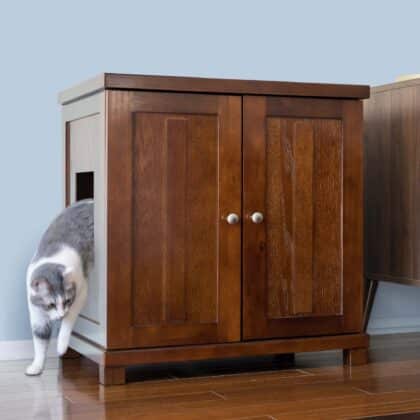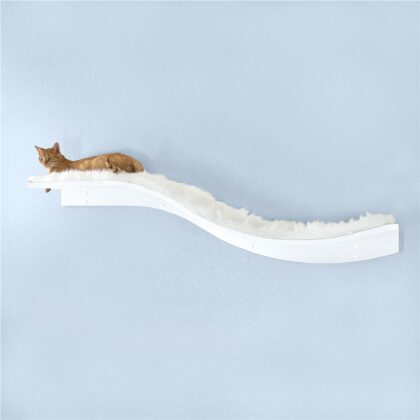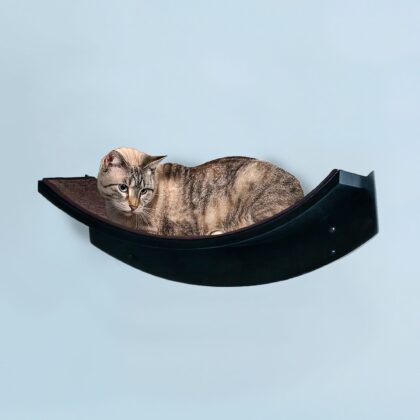
A Guide To Safely Changing Your Cat’s Food Regimen
Changing your cat’s diet is not something to be done lightly. Whether it’s due to health reasons, age, or availability issues, switching your cat’s food regimen requires careful consideration and a methodical approach. Cats are creatures of habit and can be particularly sensitive to changes in their diet, which can affect their digestion and overall health. Here’s a comprehensive guide on how to transition your cat to a new food regimen safely, featuring tips on how to integrate products from The Refined Feline’s upcoming pet food and drink supply line.
Understanding the Need for Change
Before you start transitioning your cat to a new diet, it’s crucial to understand the reasons behind the change:
- Health Concerns: Dietary changes can be necessary due to allergies, sensitivities, or specific health conditions like diabetes or kidney disease that require specialized diets.
- Life Stage: Cats’ nutritional needs change as they age. Kittens, adult cats, and seniors all have different dietary requirements.
- Quality Improvements: You might decide to switch to a higher-quality food if your current choice has fillers or additives that are not benefiting your cat’s health.
Related: Feline Nutrition 101: What Every Cat Parent Should Know
Step-by-Step Guide to Changing Your Cat’s Diet
1. Consult Your Veterinarian
Always start with a consultation with your veterinarian, especially if the dietary change is for health reasons. Your vet can recommend the best type and brand of food for your cat’s specific needs.
2. Choose the Right Food
Select a high-quality cat food that suits your cat’s specific requirements. Look for foods that list good quality protein sources as the first ingredients and have minimal fillers like corn or wheat.
3. Introduce Food Gradually
A sudden change in diet can upset your cat’s stomach or lead to refusal to eat. Start by mixing a small amount of the new food with the old in their usual bowl. Over the next 7-10 days, gradually increase the proportion of new food while decreasing the old, monitoring your cat’s response closely.
4. Monitor Your Cat’s Health
Watch for signs of digestive upset or allergies, such as diarrhea, vomiting, or excessive scratching. If these occur, slow down the transition process, and if symptoms persist, consult your veterinarian.
5. Encourage Hydration
Switching diets, especially from wet to dry food, can affect your cat’s hydration. Ensure fresh water is always available. The Refined Feline’s soon-to-be-released line of pet food and drink supplies will include innovative drinking solutions that encourage hydration and complement the nutritional needs fulfilled by their new food offerings.
6. Maintain a Feeding Schedule
Keep to a regular feeding schedule during and after the transition. Consistency helps stabilize your cat’s digestion and reduces stress.
Leveraging The Refined Feline’s Innovations
The Refined Feline is not only about sophisticated and functional designs in furniture but is also extending its innovation to nutritional products. With the upcoming release of their pet food and drink supply line, here’s how you can integrate these new offerings into your cat’s diet transition:
1. Utilize Specialized Feeding Solutions
The Refined Feline’s new line includes specialized feeding solutions that can help make the dietary transition smoother. For instance, their adjustable feeding stations can help you manage portion sizes accurately during the transition period.
2. Incorporate Healthy Treats
Integrating healthy cat treats can help your cat adjust to new flavors and textures. Use these treats as positive reinforcements that complement the meal transitions, ensuring they are given in moderation.
Long-Term Dietary Management
Once your cat has successfully switched to the new diet, ongoing management is crucial:
- Regular Veterinary Check-Ups: Routine check-ups can help monitor how well your cat is doing on the new diet and catch any potential health issues early.
- Be Observant: Continue to observe your cat’s appetite, energy levels, and overall health. Any changes might necessitate further dietary tweaks.
- Stay Informed: Keep abreast of the latest in cat nutrition and product offerings from trusted sources like The Refined Feline. Their commitment to quality and innovation can be a valuable resource for keeping your cat healthy.
Continual Assessment and Adjustment
Even after your cat has fully transitioned to the new diet, it’s crucial to remain vigilant about their health and well-being, ensuring the diet continues to meet their needs:
7. Ongoing Dietary Evaluation
Regularly evaluate the effectiveness of the new diet in maintaining your cat’s health. Look for signs of optimal health such as a shiny coat, healthy skin, clear eyes, and consistent energy levels. If any issues arise, don’t hesitate to consult your veterinarian to determine if further adjustments are needed.
8. Adjust Portions as Needed
As your cat ages or their activity levels change, their caloric needs might shift. Use The Refined Feline’s innovative feeding products to accurately measure and adjust food portions to prevent overfeeding or underfeeding, which can lead to weight issues and associated health problems.
9. Feedback to Manufacturers
If you are using The Refined Feline’s upcoming line of pet food and have feedback or suggestions, consider sharing your experiences with the manufacturer. Your insights can help improve the products and make them even more beneficial for other pet owners.
Educating Yourself and Others
Staying informed about the latest developments in cat nutrition and sharing your knowledge can help others in your community make better choices for their pets:
10. Stay Informed About Nutritional Advances
The field of pet nutrition is continually evolving. Subscribe to newsletters, attend webinars, and consult with your vet to stay updated on the latest research and recommendations for feline nutrition.
11. Share Your Experiences
If you’ve had success with a particular product or dietary regimen, sharing your story can help other cat owners who may be facing similar issues. Online forums, social media platforms, and local pet groups are great places to share insights and learn from the experiences of others.
12. Advocate for High Standards
Support and advocate for high standards in pet food production and transparency. Encourage pet food companies to provide detailed information about ingredients and manufacturing processes. This advocacy helps ensure that all pet owners can make informed decisions about what they feed their pets.
Leveraging The Refined Feline’s Expertise
As you continue to manage your cat’s dietary needs and possibly change your cat’s food regimen, remember that resources like The Refined Feline are invaluable. Their commitment to quality and innovation extends beyond furniture into the realm of pet nutrition.
The Refined Feline’s range of pet feeding solutions are designed to enhance the feeding experience for both pets and owners. From ergonomically designed feeding stations to smart feeders that help manage portions and feeding times, these products can play a pivotal role in your cat’s dietary management.
Conclusion
Successfully changing your cat’s food regimen requires careful planning, observation, and ongoing management. By taking a thoughtful approach and utilizing comprehensive resources like those offered by The Refined Feline, you can ensure that your cat enjoys a diet that promotes optimal health and vitality. Remember, the ultimate goal is to provide a diet that supports your cat’s specific needs, enabling them to lead a happy, healthy life for years to come.










